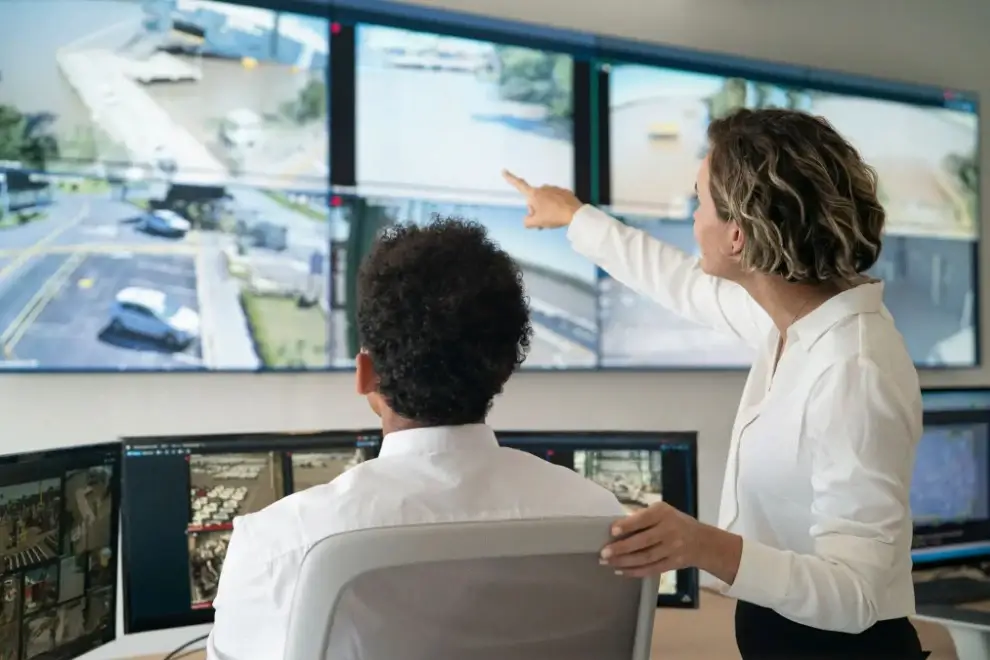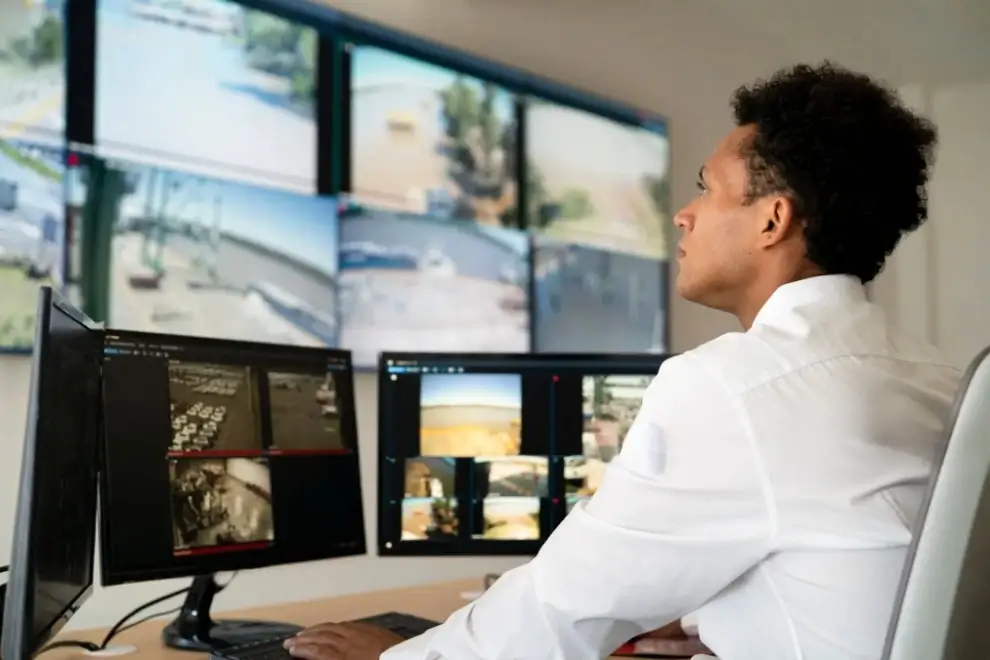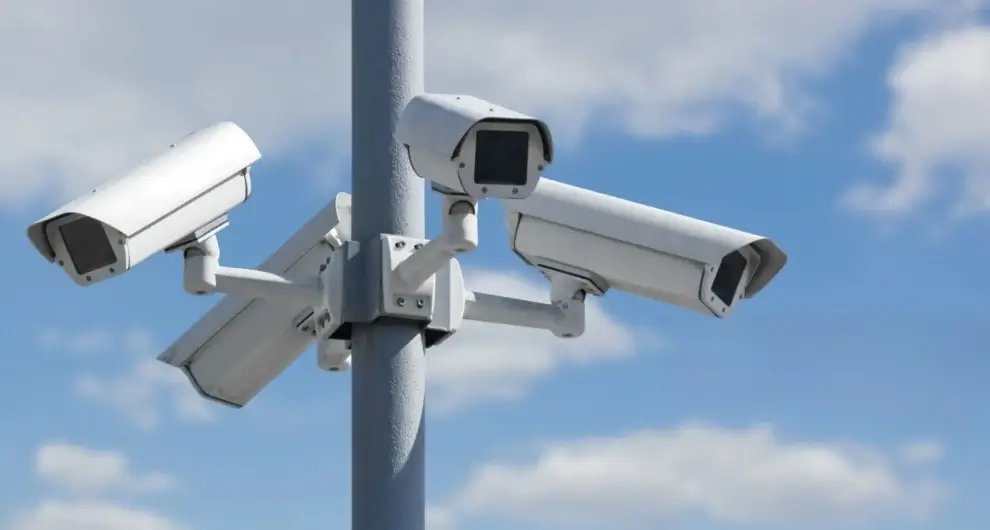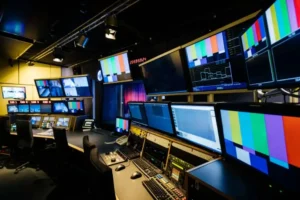In 2025, a CCTV control room isn’t just a place full of screens—it’s where split-second decisions are made to keep people and property safe. It’s the intersection of technology, focus, and smart infrastructure. From where I stand—as someone who helps design and build control room consoles—a control room console manufacturer. I can tell you that the layout, durability, and comfort of the workspace play a much bigger role than most people realize.
This guide pulls directly from the work we’ve done over the years, building real-world CCTV control rooms for all kinds of industries. We’ll walk through what actually makes a control room run smoothly—from the consoles themselves to the flow of information and the human factors behind the scenes. If you’re designing a CCTV control room, upgrading one, or just trying to understand what goes into it, you’re in the right place.
What’s a CCTV Control Room, Really?
If you’ve ever walked into a CCTV control room, you know it’s more than just a wall of screens. It’s the core of any modern surveillance system—the place where everything comes together. Think of it like a nerve center: operators, technology, and procedures all working in sync to protect people and property.
From where I stand—as someone who designs and builds control room consoles—we see firsthand how much rides on this space being set up right. Inside, trained security staff monitor real-time video feeds on large displays or video walls. They’re not just watching—they’re ready to act the moment something seems off. Whether it’s a trespasser or a technical issue, this is where decisions get made.
Modern CCTV control rooms go beyond cameras. They often integrate access control systems, intrusion alarms, and sometimes even HVAC and fire controls (Department of Homeland Security, 2013). When done right, it gives the operator a full picture of what’s happening and the tools to coordinate a quick response. Headsets, intercoms, secure phone lines—they’re all essential for that coordination.
From an equipment standpoint, everything needs to be built for 24/7 reliability. That includes the consoles we manufacture, along with network gear like routers and switches, backup systems like UPS units and generators, and of course, video recorders—NVRs and DVRs—that log every second of footage for later review or evidence.
And let’s not forget the people behind the consoles. A CCTV control room is only as effective as its operators. These folks need to stay sharp for hours at a time, spotting suspicious activity, responding to alarms, and keeping detailed incident logs. Good design—both of the room and the furniture—goes a long way in supporting them.
At the end of the day, a CCTV control room is more than a room with screens. It’s where technology and human vigilance come together to prevent problems before they get out of hand.

Why the CCTV Control Room Matter
So, why does a CCTV control room matter when you’ve already got cameras everywhere?
Because cameras on their own can’t respond to threats. A CCTV control room gives you the eyes, ears, and hands to act in real time.
Here’s what makes them so important:
Crime deterrence: Knowing someone’s actively monitoring makes a difference. It discourages everything from petty theft to more serious intrusions.
Fast response: When something happens, operators can immediately assess and respond—whether that means calling security, alerting first responders, or locking down a building.
System integration: Today’s CCTV control rooms bring together multiple systems: cameras, access control, alarms, and analytics. This central view reduces blind spots.
Evidence handling: Recorded footage isn’t just for playback—it’s often used in investigations. CCTV control rooms help ensure that data is stored correctly and retrieved quickly.
Operational efficiency: Centralized surveillance can cut down on the need for constant on-site patrolling. That’s a big plus for large facilities or multi-site operations.
Workplace safety: CCTV control room teams can keep an eye out for accidents, unsafe behavior, or emergencies—even before anyone else notices.
Scalability: You can expand as you grow. Add more cameras, layer on AI, or connect more buildings—all from the same core space.
Bottom line: if you want a proactive, coordinated security approach, a CCTV control room is essential.
What a Good CCTV Control Room Needs
A well-designed CCTV control room is about more than tech—it’s about creating a space where people and equipment work together smoothly.
Here’s what I recommend based on years of building these environments:
Monitors and video walls: Each operator should have at least two monitors, plus access to a shared video wall for priority feeds. Bigger systems? Go modular.
Reliable storage: Whether you’re using NVRs, DVRs, or cloud storage, make sure you’ve got enough space—and that it’s secure and easy to access.
Strong network infrastructure: Routers, switches, and servers have to support fast, uninterrupted video streams. Low latency is key.
Ergonomic consoles: Operator comfort matters. The consoles we build are designed for long shifts—adjustable surfaces, clear sightlines, and intuitive layouts, which aligns with ergonomic best practices for reducing operator fatigue and improving focus (National Protective Security Authority [NPSA], n.d.).
Environmental controls: Lighting, temperature, and acoustics all affect focus. Glare-free lighting and climate control keep both people and hardware operating efficiently.
Redundant power systems: Always include UPS and backup generators. It’s not optional if you want real 24/7 uptime.
System integration: Make sure the CCTV control room can interface with alarms, building access, and emergency systems. The fewer systems that live in silos, the better.
Physical security: Use access controls—RFID or biometrics—to keep unauthorized people out. These rooms hold sensitive footage and systems.
And always make sure the room complies with local and industry regulations, especially around data storage and camera resolution standards.

What’s Inside: Key CCTV Control Room Equipment
Here’s a closer look at the gear that keeps these rooms running:
CCTV cameras: You’ll see a mix—fixed domes, PTZs for scanning wide areas, thermal cameras for low-light zones.
Displays: High-res monitors and video walls help operators stay on top of multiple views at once.
Storage: NVRs and DVRs are common, but cloud storage is gaining ground. Just make sure your footage is time-stamped, searchable, and secure.
Control consoles: Our bread and butter. These are the operator workstations—built for comfort, fast access, and efficient workflows.
Networking gear: Switches, routers, and servers handle the data traffic behind the scenes.
Alarms and analytics: Motion sensors, AI detection, and alert systems feed into the CCTV control room for fast action.
Communication tools: Think headsets, radios, intercoms. Clear communication saves time—and sometimes lives.
Backup power: UPS units and generators are your insurance against blackouts.
Diagnostic tools: Even simple tools like multimeters are handy for on-the-spot equipment checks.
When everything works together, you get a resilient, always-on security setup.
How to Design and Build a CCTV Control Room That Works
There’s an art to setting up a CCTV control room that actually supports the people using it. Here’s how we approach it:
Pick the right location: It should be secure, centrally located (especially in large buildings), and easy to cable.
Plan the layout: Each operator gets a console with a clear view. Limit monitor count to avoid eye strain, and use video walls for shared visuals.
Manage the cables: Built-in routing keeps wires hidden and safe. Fewer tripping hazards, fewer problems.
Isolate noisy gear: Keep servers and storage units out of the main workspace to cut heat and sound.
Control the environment: HVAC is a must—for both people and electronics. Also, soundproofing helps operators concentrate.
Use reliable systems: Interoperability matters. You don’t want five software tools that can’t talk to each other.
Plan for power: Redundancy is key. No single point of failure should be able to take you offline.
Secure the room: Biometric or RFID access only. No exceptions.
Train and maintain: Even the best setup won’t work without well-trained operators and a maintenance schedule.
A good room supports both security operations and the humans running them.

What CCTV Operators Actually Do
Operators are the human side of the equation—and they’re essential.
Their day-to-day looks like this:
Monitoring feeds: They watch for unusual behavior, security breaches, or emergencies using live video and PTZ camera controls.
Responding to events: When something’s off, they act. That might mean alerting guards, calling police, or activating protocols.
Running system checks: Cameras need to work. Storage systems need to record. Operators do routine checks to keep everything running.
Documenting everything: Logs matter. Operators record incidents, decisions, and system issues. These records are essential for accountability and legal compliance.
Communicating clearly: They stay in touch with teams on the ground—often relaying critical info in real time.
Protecting privacy: Operators also have to follow strict rules around footage access and data handling.
It’s a demanding job that requires attention to detail, good judgment, and the right tools to support them.
Best Practices for Running a CCTV Control Room
Want to keep your CCTV control room running smoothly? Here’s what we recommend:
Set clear SOPs: Everyone should know what to do in routine situations and emergencies.
Design for comfort: Ergonomics reduce fatigue. Think adjustable chairs, properly positioned monitors, and a quiet space.
Control access: Use secure entry systems and log who comes in and out.
Stay on top of maintenance: Daily checks and regular tune-ups prevent outages and downtime.
Keep training up to date: Tech changes fast. So do threats. Your team should be ready for both.
Communicate well: Tools like headsets and shared dashboards make fast coordination easier.
Use smart tech: AI analytics and cloud tools can take pressure off the team and catch things faster.
Support your team: Breaks, reasonable shifts, and a well-designed space go a long way in keeping operators sharp.
When people and systems work together, that’s when a CCTV control room truly performs.


